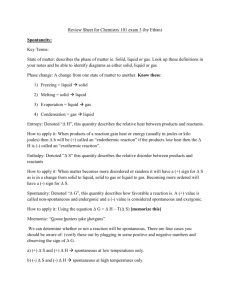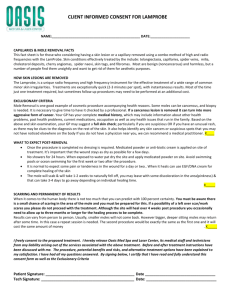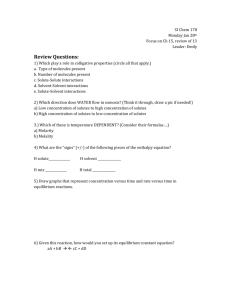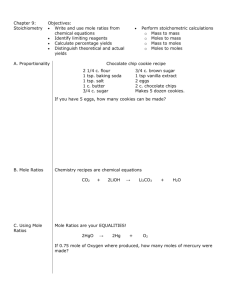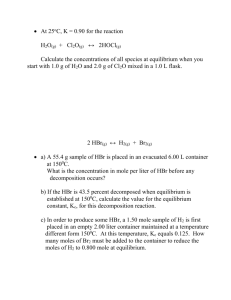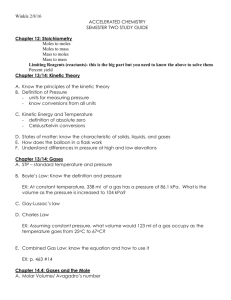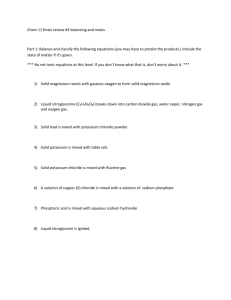Key to Thermodynamics Packet (Old AP Exam FRQs) 1998 #3
advertisement
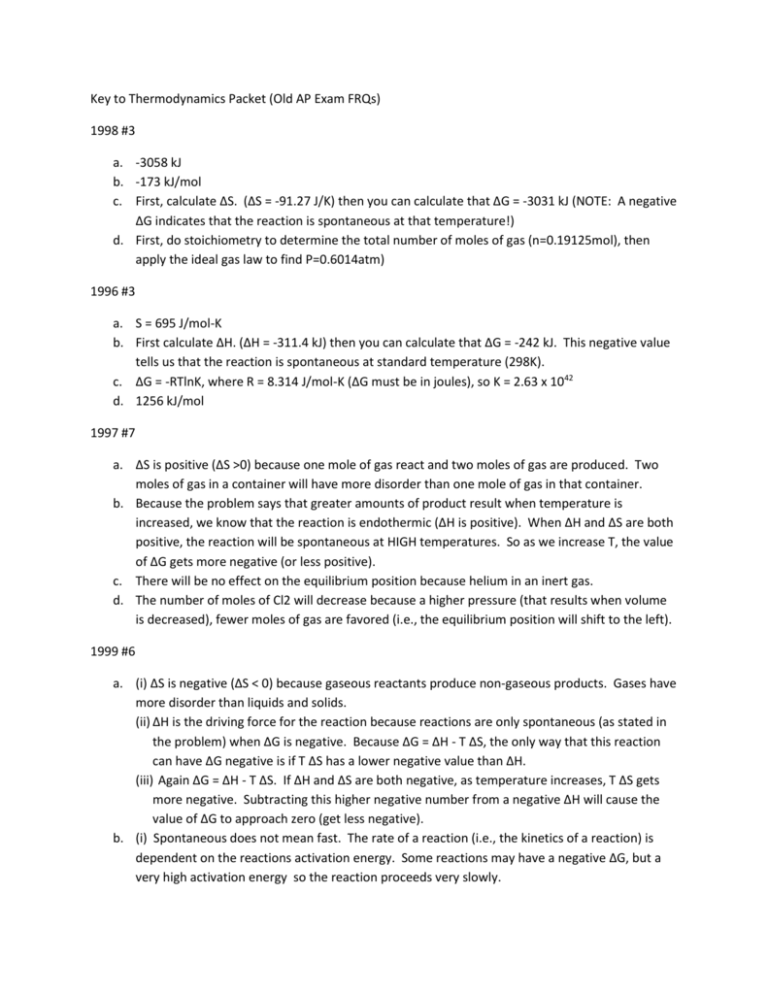
Key to Thermodynamics Packet (Old AP Exam FRQs) 1998 #3 a. -3058 kJ b. -173 kJ/mol c. First, calculate ΔS. (ΔS = -91.27 J/K) then you can calculate that ΔG = -3031 kJ (NOTE: A negative ΔG indicates that the reaction is spontaneous at that temperature!) d. First, do stoichiometry to determine the total number of moles of gas (n=0.19125mol), then apply the ideal gas law to find P=0.6014atm) 1996 #3 a. S = 695 J/mol-K b. First calculate ΔH. (ΔH = -311.4 kJ) then you can calculate that ΔG = -242 kJ. This negative value tells us that the reaction is spontaneous at standard temperature (298K). c. ΔG = -RTlnK, where R = 8.314 J/mol-K (ΔG must be in joules), so K = 2.63 x 1042 d. 1256 kJ/mol 1997 #7 a. ΔS is positive (ΔS >0) because one mole of gas react and two moles of gas are produced. Two moles of gas in a container will have more disorder than one mole of gas in that container. b. Because the problem says that greater amounts of product result when temperature is increased, we know that the reaction is endothermic (ΔH is positive). When ΔH and ΔS are both positive, the reaction will be spontaneous at HIGH temperatures. So as we increase T, the value of ΔG gets more negative (or less positive). c. There will be no effect on the equilibrium position because helium in an inert gas. d. The number of moles of Cl2 will decrease because a higher pressure (that results when volume is decreased), fewer moles of gas are favored (i.e., the equilibrium position will shift to the left). 1999 #6 a. (i) ΔS is negative (ΔS < 0) because gaseous reactants produce non-gaseous products. Gases have more disorder than liquids and solids. (ii) ΔH is the driving force for the reaction because reactions are only spontaneous (as stated in the problem) when ΔG is negative. Because ΔG = ΔH - T ΔS, the only way that this reaction can have ΔG negative is if T ΔS has a lower negative value than ΔH. (iii) Again ΔG = ΔH - T ΔS. If ΔH and ΔS are both negative, as temperature increases, T ΔS gets more negative. Subtracting this higher negative number from a negative ΔH will cause the value of ΔG to approach zero (get less negative). b. (i) Spontaneous does not mean fast. The rate of a reaction (i.e., the kinetics of a reaction) is dependent on the reactions activation energy. Some reactions may have a negative ΔG, but a very high activation energy so the reaction proceeds very slowly. (ii) The addition of a catalyst has no effect on the value of ΔG. Catalysts only lower the activation energy for the reaction. 2002 #8 a. ΔS will be positive because one mole of a solid and one mole of a gas react to produce two moles of gas. Two moles of gas in a container will have more disorder than one mole of a solid mixed with one mole of a gas in the same container. b. The sign for ΔH is positive, because at higher temperature more CO (a product) results. Increasing temperature is the same as adding heat, so the reaction is endothermic. c. (ΔH is the difference between the two horizontal lines) d. Because solids are no included in the equilibrium constant, they have no effect on the position of the equilibrium. Therefore, adding more solid carbon would have no effect on the percent of CO in the equilibrium mixture.

